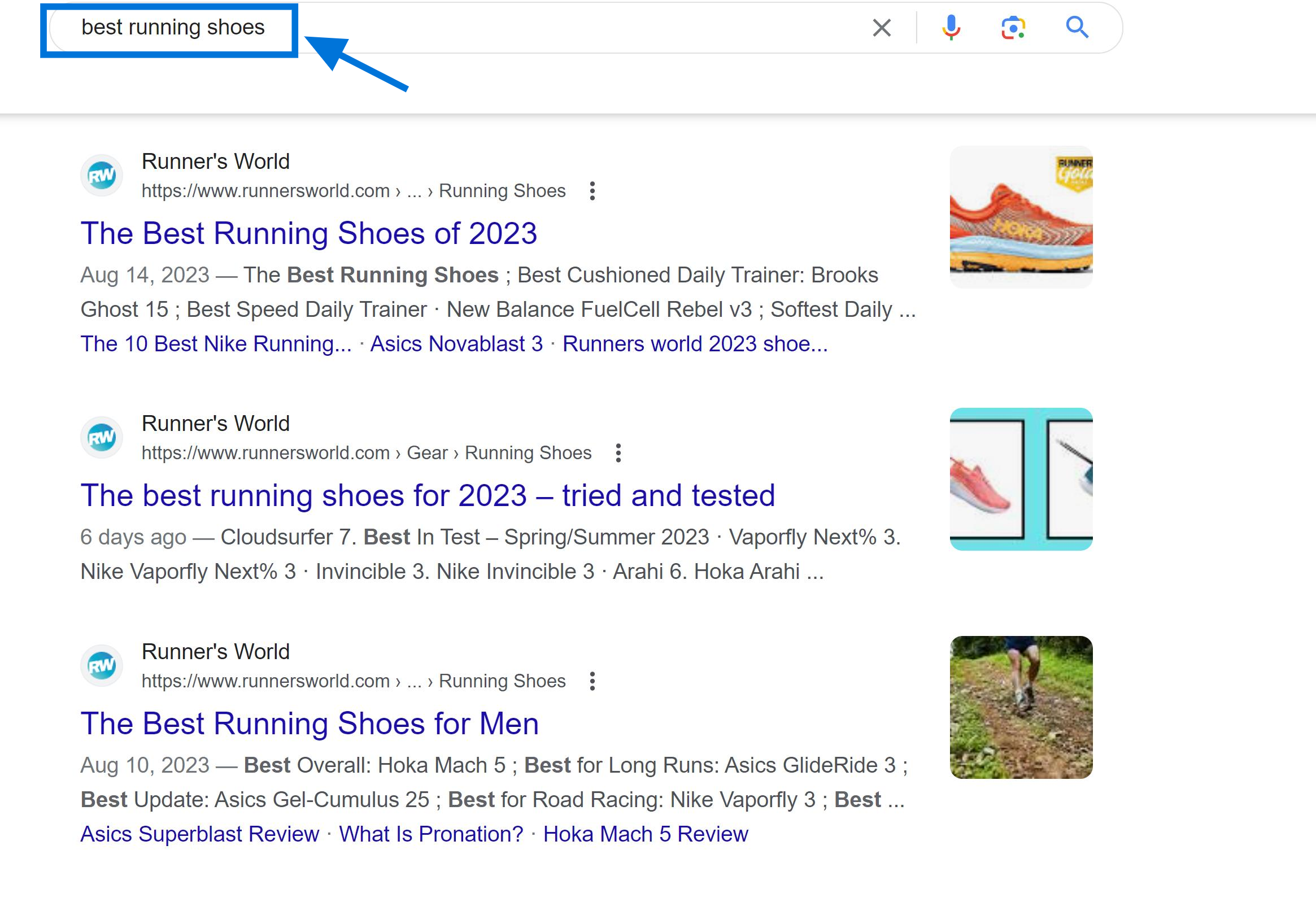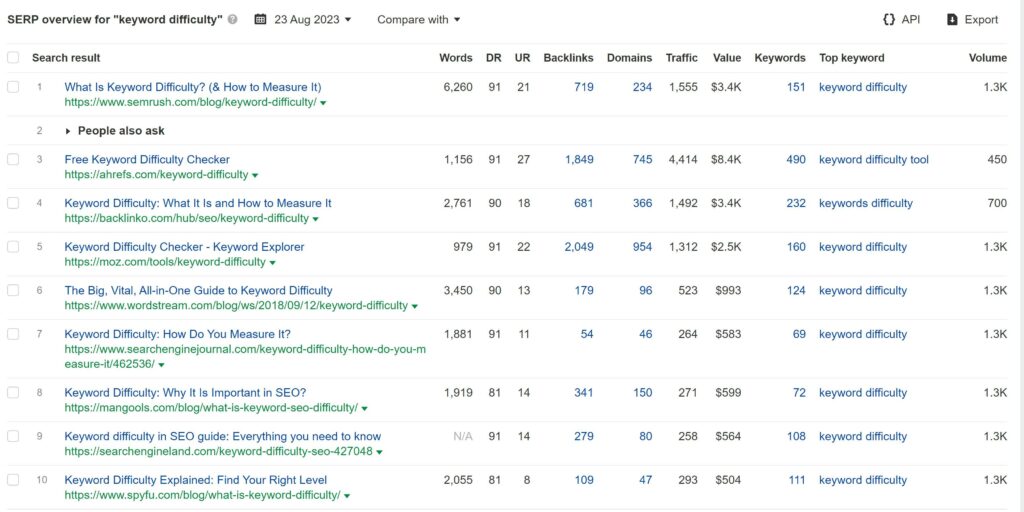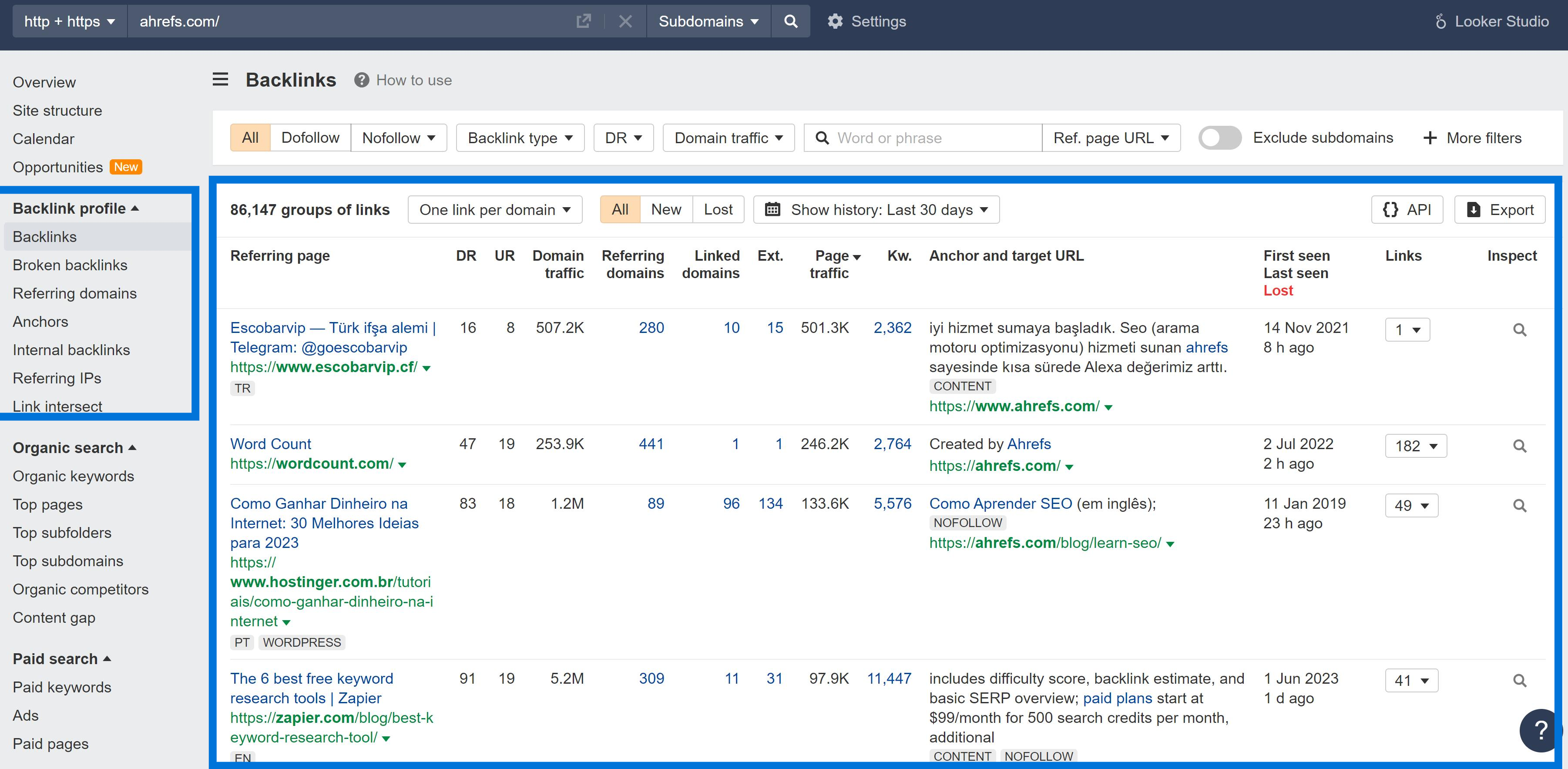Did you know that understanding keyword difficulty is crucial for optimizing your website’s search engine rankings? In fact, it can make or break your SEO strategy.
Keyword difficulty refers to the level of competition and effort required to rank a particular keyword on search engine result pages (SERPs). It helps you gauge how easy or challenging it will be to outrank your competitors and attract organic traffic.
The importance of keyword difficulty in SEO cannot be overstated. Analyzing difficulty scores allows you to identify which keywords are worth targeting based on their competition levels. This knowledge allows you to focus your efforts on keywords with a higher chance of ranking well.
Considering user intent and the bid competition for specific terms gives you an edge in creating content that aligns with what users are searching for.
In this article, we’ll review what keyword difficulty is, its importance in SEO, and some tools to properly evaluate it.
What is Keyword Difficulty?
Keyword difficulty refers to the level of competition and effort required to rank for a specific keyword on search engines. It provides an insight into how challenging it would be to achieve a high-ranking search engine position for a particular term.
By understanding the keyword difficulty score, website owners and marketers can determine which keywords are worth targeting in their content strategy.
Search engines like Google use various factors to evaluate the difficulty of ranking for a specific keyword. These factors include the number of competitors targeting the same keyword, the quality of their content, backlink profiles, and overall domain authority.
The higher the competition and quality of existing content, the more difficult it becomes to rank well.
The role of competition plays a significant part in determining keyword difficulty. If numerous websites with high-quality content have already established themselves as authorities in a particular niche, it becomes increasingly challenging for new entrants to compete effectively.
On the other hand, if there are fewer competitors or lower-quality content surrounding a specific keyword, it may present an opportunity for easier rankings.
To illustrate this further, let’s consider two examples: “best smartphones” and “how to tie shoelaces.”
- “Best smartphones” is an example of a highly competitive keyword with significant difficulty. Many established tech publications and review websites target this term due to its popularity among consumers searching for information on smartphones. Ranking well for this term requires extensive efforts, such as creating exceptional content, building authoritative backlinks, and optimizing on-page elements.

- In contrast, “how to tie shoelaces” represents a low-difficulty keyword with less competition. This term attracts less attention from authoritative sources compared to broader topics like smartphones. As a result, smaller blogs or instructional websites have better chances of securing top positions by providing comprehensive guides or videos on tying shoelaces.

Understanding keyword difficulty is crucial because it helps marketers prioritize their efforts based on realistic expectations and available resources.
Instead of wasting time and energy on highly competitive keywords, they can focus on targeting less difficult terms that align with their website’s authority and capabilities.
Importance of Keyword Difficulty in SEO
Keyword difficulty plays a crucial role in the success of any SEO strategy. It directly impacts organic traffic and rankings, making it essential for businesses to understand and effectively manage keyword difficulty.
Impact on Organic Traffic and Rankings
The keyword difficulty level determines how challenging it is to rank for a specific term on the search engine results page (SERP).
Highly competitive keywords with high difficulty scores are often dominated by well-established websites with strong backlink profiles and high domain authority. Attempting to rank for such keywords without a solid plan can be an uphill battle.
On the other hand, targeting low-difficulty keywords allows websites to compete more effectively, especially if they have limited resources or are relatively new. By strategically selecting less competitive terms, businesses can increase their chances of ranking higher on the SERP, resulting in improved organic traffic and visibility.
Prioritizing Content Creation Efforts
Keyword difficulty serves as a valuable metric when prioritizing content creation efforts. By analyzing the competition associated with different keywords, businesses can focus their resources on creating content that is more likely to rank well.
To prioritize content creation effectively using keyword difficulty, consider the following steps:
- Identify relevant low-difficulty keywords: Conduct thorough research to find keywords that align with your target audience’s search intent while having lower competition levels.
- Optimize existing content: Evaluate your current website content and identify opportunities to incorporate these low-difficulty keywords naturally.
- Create new targeted content: Develop fresh articles, blog posts, or landing pages centered around these identified low-difficulty keywords.
- Build quality backlinks: Link building is crucial for improving your website’s authority and relevance in search engines’ eyes. Focus on acquiring quality backlinks from authoritative sources within your industry.
Balancing High and Low-Difficulty Keywords
Finding the right balance between high and low-difficulty keywords is key to achieving optimal results in SEO.
While targeting low-difficulty keywords can yield quicker wins, it’s important not to neglect high-difficulty terms altogether.
High-difficulty keywords may require more time and effort to rank for, but they often come with a higher search volume and potential for greater organic traffic.
By incorporating a mix of both types of keywords into your SEO strategy, you can maximize your website’s visibility across various search queries.
Long-Term Benefits of Targeting Less Competitive Keywords
Targeting less competitive keywords not only allows businesses to gain traction in the short term but also offers long-term benefits.
As your website establishes its authority in specific niches or topics through successful ranking for low-difficulty keywords, it becomes easier to target more competitive terms over time.
By consistently creating valuable content around less competitive keywords, you can build a strong backlink profile that enhances your website’s overall link equity. This gradual accumulation of quality backlinks further strengthens your website’s authority and improves its chances of ranking well for higher-difficulty keywords.
Factors Affecting Keyword Difficulty
Relevance
One of the most important factors to consider is content relevance. It’s crucial to ensure that your content matches the user intent behind the search query.
Search engines strive to provide users with the most relevant results, so if your content doesn’t align with what users are looking for, it will be challenging to rank well.
To improve relevance, start by thoroughly understanding your target keywords. Analyze the search intent behind them and craft your content accordingly.
For example, if someone searches for “best running shoes,” they’re likely looking for recommendations or reviews. Therefore, creating a comprehensive list of top-rated running shoes and including detailed reviews can enhance the relevance of your page.

Competition
Another significant factor in determining keyword difficulty is competition. You need to analyze the strength and authority of competing websites targeting similar keywords.
If you’re up against established sites with high domain authority and a strong backlink profile, it will be more challenging to outrank them.
To assess competition effectively, consider using tools that provide insights into competitors’ page authorities and inbound links. This data allows you to gauge their relative strength compared to yours. Examine their content quality and user engagement metrics like time on site and bounce rate.

Search Volume
Evaluating search volume is essential when assessing keyword difficulty. While targeting highly popular keywords may seem tempting due to their potential for high traffic, they often come with fierce competition.
Finding a balance between search volume and competition is key.
Look for target keywords with decent search volume but lower competition levels—these present opportunities for ranking well without facing an uphill battle against authoritative sites.

Backlink Profile
The backlink profile of competing pages plays a vital role in determining keyword difficulty. Backlinks are external links from other websites pointing towards a specific page or domain—a vote of confidence in its authority.
Assessing both the quality and quantity of backlinks to competing pages will give you insights into their authority.
Tools like Moz or Ahrefs can help you analyze this data. Focus on building a strong backlink profile for your own site by reaching out to relevant websites and offering valuable content that naturally earns links.

Measuring Keyword Difficulty with Accurate Metrics
Utilizing metrics like Moz’s Keyword Difficulty Score, SEMrush’s Keyword Difficulty tool, or Ahrefs Keyword Difficulty Score is crucial for determining the difficulty of keywords in search engine optimization (SEO).
These metrics provide valuable insights into the competitiveness of specific keywords, helping businesses make informed decisions about their target keywords.
Understanding how these metrics calculate and present keyword difficulty is essential to properly interpret the scores.
Each metric uses its own algorithm to evaluate various factors that contribute to keyword difficulty. These factors may include the number of websites competing for a particular keyword, the authority score of those websites, and the volume of searches conducted for that keyword.
Interpreting the scores provided by these metrics allows SEO professionals to assess the effort required to rank for a specific keyword.
A high keyword difficulty score indicates strong competition and suggests that more resources and time may be needed to achieve favorable rankings.
On the other hand, lower keyword difficulty scores indicate less competition and potentially easier ranking opportunities.
However, it is important not to rely solely on metric scores when analyzing keyword difficulty. Considering additional factors beyond these scores ensures a comprehensive analysis.
For example, assessing the quality of content on competitor websites can provide insights into whether they have high-quality content or if there are opportunities to surpass them with better content.
Moreover, while high-volume keywords may seem appealing due to their potential traffic, it’s crucial to evaluate whether they align with your website’s goals and target audience. It’s possible that focusing on long-tail keywords with lower search volumes but higher conversion rates could yield better results for your business.
Building high authority through quality backlinks is another factor that should be considered when evaluating keyword difficulty. If competitor websites have established themselves as authoritative sources in your industry, it might require more effort and time to outrank them.
In addition to analyzing competitors’ websites, it is also beneficial to consider your own website’s authority score and overall online presence.
Suppose you have a well-established blog or business website with a strong online following. In that case, it may be easier to rank for keywords compared to a new website without an established reputation.
To summarize, measuring keyword difficulty using accurate metrics is crucial for SEO success.
By understanding how these metrics calculate and present keyword difficulty, interpreting the scores, and considering additional factors beyond metric scores, businesses can make informed decisions about their target keywords.
Remember that high volume doesn’t always guarantee success; quality content and building authority are equally important in achieving favorable rankings.
Exploring Tools for Determining Keyword Difficulty
Determining the difficulty of a keyword is crucial for any successful SEO strategy. It helps you understand the competition and choose keywords that will give you the best chance of ranking higher in search engine results.
Google AdWords’ Keyword Planner
Google AdWords’ Keyword Planner is an excellent starting point for your initial keyword research. This tool provides valuable insights into search volumes, competition levels, and suggested bid amounts for specific keywords.
By utilizing this tool, you can gain a general understanding of how popular a keyword is and its potential value.
Specialized SEO Tools
To delve deeper into keyword analysis, specialized SEO tools like Ahrefs, SEMrush, or Moz come to the rescue. These tools offer comprehensive features to evaluate keyword difficulty and competition. They provide detailed data on search volume, organic traffic potential, backlink profiles of competing pages, and more.
By leveraging these tools’ capabilities, you can get a holistic view of the competitive landscape surrounding your chosen keywords. This information empowers you to make informed decisions about which keywords are worth targeting in your content strategy.
Competitor Analysis Tools
Competitor analysis plays a vital role in determining keyword difficulty as it allows you to uncover valuable insights from your competitors’ strategies.
Tools like Ahrefs or SEMrush offer competitor analysis features that help identify which keywords your competitors are targeting successfully.
By analyzing their top-ranking pages and the associated keywords they rank for, you gain valuable intelligence about what works in your industry.
This knowledge enables you to refine your own approach by either targeting similar keywords or identifying gaps where less competitive but still relevant phrases exist.
Free Browser Extensions
If budget constraints limit access to paid SEO tools, several free browser extensions can still provide valuable assistance with determining keyword difficulty:
- Keywords Everywhere: This extension displays search volume, competition data, and related keywords directly in your browser as you search. It offers valuable insights without the need to leave the search engine results page.
- Ubersuggest: Developed by Neil Patel, Ubersuggest provides keyword ideas, search volume data, and competition metrics for free. It is a handy tool for quick keyword research.
These extensions offer a convenient way to gather essential information quickly and efficiently during keyword research.
Additional FAQs on Keyword Difficulty
How Can I Find out The Keyword Difficulty for My Target Keywords?
To find out the keyword difficulty for your target keywords, you can make use of various SEO tools such as Ahrefs or Moz’s Keyword Explorer.
These tools provide a metric that indicates how difficult it will be to rank for a particular keyword based on factors like competition, backlink profiles of top-ranking pages, and other relevant data.
Is It Better to Target High or Low Difficulty Keywords?
It depends on your goals and resources.
Targeting high-difficulty keywords may require more effort and time to rank well since they are more competitive.
On the other hand, low-difficulty keywords may have less competition but could also have lower search volumes.
It’s important to strike a balance between targeting both types of keywords to maximize your website’s visibility.
Can I Outrank Competitors with Higher Domain Authority?
Yes, it is possible to outrank competitors with higher domain authority if you focus on optimizing other ranking factors.
While domain authority is important, it’s not the only factor search engines consider when determining rankings.
By creating high-quality content, building relevant backlinks, and improving user experience on your website, you can increase your chances of outranking competitors with higher domain authority.
How Often Should I Re-Evaluate Keyword Difficulty?
Keyword difficulty can change over time due to shifts in competition or changes in search behavior. It is recommended to re-evaluate keyword difficulty periodically, especially for highly competitive keywords or as your industry evolves.
Regularly monitoring and adjusting your keyword strategy will help you stay ahead of the game and maintain a strong online presence.
Are Long-Tail Keywords Less Difficult to Rank For?
In general, long-tail keywords have lower competition compared to broader keywords, making them potentially easier to rank for.
However, this may vary depending on your niche and target audience.
Long-tail keywords also tend to be more specific and have lower search volumes. It’s important to strike a balance between targeting long-tail and broader keywords based on their relevance and the potential traffic they can bring to your website.
Conclusion: Key Takeaways on Keyword Difficulty
In conclusion, understanding keyword difficulty is crucial for any SEO strategy. It helps you identify the level of competition and determine which keywords are worth targeting.
By analyzing factors like search volume, competition, and relevance, you can choose the right keywords that have a higher chance of ranking well in search engine results.
To effectively measure keyword difficulty, make use of accurate metrics provided by various tools available. These tools can give you valuable insights into the competitiveness of specific keywords and help you prioritize your efforts accordingly.
Remember that keyword difficulty is not a one-size-fits-all concept; it varies depending on your niche and target audience.
To stay ahead in the SEO game, continuously monitor keyword difficulty and adjust your strategy as needed.
Keep an eye on emerging trends and adapt to changes in search algorithms. By staying proactive and regularly evaluating keyword difficulty, you can optimize your website’s visibility and attract more organic traffic.
